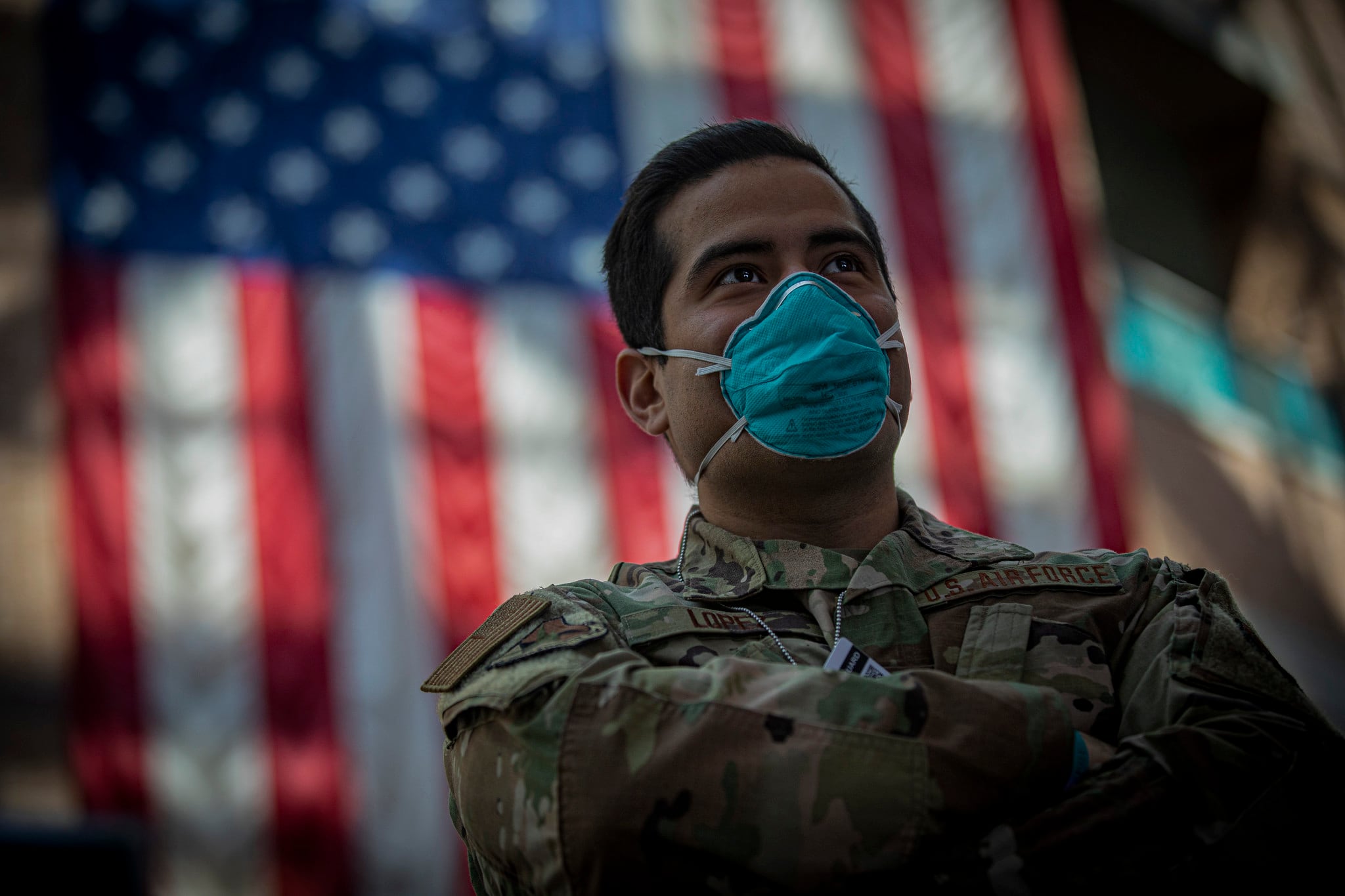The Defense Department has set a goal to be testing 60,000 service members a day for coronavirus by June, but they won’t get there all at once. The plan is to start testing the most at-risk and most essential troops first, then work their way toward the rest of the force as testing capacity increases.
Of highest priority are active and Reserve health care workers at field hospitals and other alternative care centers, followed closely by high-end counter-terror units and members of the nuclear triad, including bomber crews, submariners and ballistic missile units.
“It’s important to note that testing by itself … does not enable us at this time to improve our readiness and availability,” Air Force Gen. John Hyten, the vice chairman of the Joint Chiefs of Staff, told reporters Wednesday. “Testing alone does not do that.”
But as part of a protocol that includes screening for symptoms, tracking potential exposure and 14-day quarantine periods, it could be the key to deploying units and bringing in new recruits safely.
The ability to test 60,000 troops a day, which would cover all active duty troops in a few weeks, won’t happen all at once.
Instead, Hyten said, Defense Secretary Mark Esper has signed off on a four-tier scheme: tier one would include critical national capabilities, like nuclear forces; tier two includes deployed forces, tier three includes forward-deployed or redeploying forces; and tier four is the remainder of the force.
Tier one, along with all new basic trainees, will complete testing this month, Hyten said, adding, “and I think we’ll rapidly get into tier two and tier three.”
In simpler terms, special operations counter-terror units and nuclear triad units get first priority, followed by those deployed in support of operations outside the U.S., following by troops stationed abroad, including Europe or the Indo-Pacific ― as well as troops heading home from deployments ― and then everyone else who is currently stateside.
DoD is working with the White House, the Federal Emergency Management Agency, the Health and Human Services Department and industry to get enough testing kits and test analysis equipment, Hyten said, to take care of the supply problem.
Then the issue will be getting those supplies out to all of the remote locations where troops are deployed, but that will be the easier part.
“Because when it becomes a logistics problem, that’s something we’re really good at,” he said.
There will eventually be enough testing supplies, he added, but the challenge will be prioritizing where they go.
Meanwhile, doctors, nurses, respiratory specialists and medics working in Army field hospitals, aboard Navy hospitals ships or the Javits center in New York, for example, are considered more like “tier zero,” Deputy Defense Secretary David Norquist told Military Times.
They, along with the symptomatic DoD employees and personnel already being tested, will continue to track their symptoms and exposures, along with testing.
For the more than 40,000 National Guard members who are doing pandemic response support in every state and territory, local medical staff will determine whether they should be tested, based on their exposure.
RELATED

As of Wednesday, 713 Guardsmen have tested positive for COVID-19, including mobilized troops. Though they are observing social distancing guidelines where possible and covering up with protective gear otherwise, working in their communities ― including staffing mobile testing sites ― puts them at higher risk for contracting the virus from members of the public.
DoD is also looking into antibody testing, as more an more evidence emerges that coronavirus can be symptom-free in many of those infected.
Researchers are going to reach out to volunteers for antibody testing, Norquist said, including thousands of sailors assigned to the aircraft carrier Theodore Roosevelt.
Of more than 700 who have tested positive, roughly more than half of those sailors were asymptomatic. And further, since crew members evacuated the carrier and began quarantine in Guam, previously negative sailors have developed symptoms and tested positive.
“By putting them in quarantine for 14 days, by the end of the 14 days ― if they did, in fact, have it ― it would most likely have developed to the point that either they’d have symptoms, or a test would catch them even if they were asymptomatic,” Norquist said.
The trick ― for troops who are preparing to deploy, or who need to travel for training or other temporary assignments ― will be the right combination of testing and isolation to catch any exposure and give the virus a chance to show up.
And while antibody testing will be part of the scheme, Hyten said, the research is still thin.
“Beyond the current diagnostic and screening tests, the science is not clear at this moment, exactly, [on] what we get from an antibody test.” he said.
While a test might tell someone that they have successfully fought of COVID-19, it’s not yet known how long that immunity lasts, or whether a freshly mutated strain could infect someone with antibodies again.
Meghann Myers is the Pentagon bureau chief at Military Times. She covers operations, policy, personnel, leadership and other issues affecting service members.





